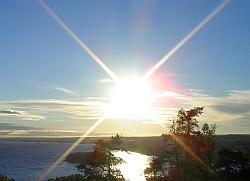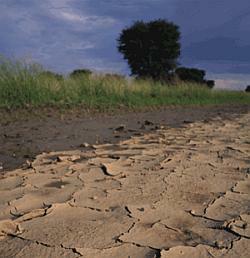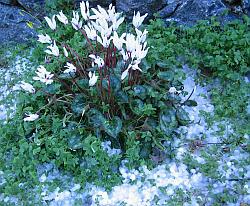The climate is described as “intense Mediterranean” in North Cyprus – this means that in general the island enjoys short mild and temperate winters and very long hot summers. Temperatures and rainfall vary depending on the elevation – naturally enough it can feel a lot cooler at the top of St Hilarion or Buffavento Castle than it does on the harbour in Kyrenia on the same summer’s day!

The summer can begin as early as March…though officially it doesn’t start until June, but by then temperatures are already in the 30s (around 86F). From June to September there is no rain, the days are long and hot, the evenings are balmy and relaxing – though the nights can sometimes be a little uncomfortable – a fan or an air-conditioning unit soon stifle the night-time heat and allow for restful sleep.
In October in North Cyprus the weather begins to change, though you can still enjoy sunbathing on Alagadi beach and a beer on the harbour! The first autumn rains usually fall in the first two weeks of October and bring the plants and trees a much needed drink. After the long hot summer, drains are full of dust and leaves and this makes for an interesting driving experience after the first few days of rains!
Water shortage can be a real issue in Northern Cyprus during the Spring and Summer, and so excuse us if we mention  rain a lot in this article! It doesn’t rain that often in northern Cyprus; precipitation is confined to the short Autumn and Winter months, but the rains bring the greenery and the greenery soon bursts into colourful bloom. Springtime in Cyprus is an incredible sight to behold. If you only ever visit in the Summertime you’ll find it hard to believe that the sometimes desert-like interior landscape greens over and then gives birth to thousands of beautiful flowers, but it does!
rain a lot in this article! It doesn’t rain that often in northern Cyprus; precipitation is confined to the short Autumn and Winter months, but the rains bring the greenery and the greenery soon bursts into colourful bloom. Springtime in Cyprus is an incredible sight to behold. If you only ever visit in the Summertime you’ll find it hard to believe that the sometimes desert-like interior landscape greens over and then gives birth to thousands of beautiful flowers, but it does!
Officially the seasons in North Cyprus are Autumn in October, Winter from November to March, Spring in April and May and Summer from June to September. But living in North Cyprus we can tell you that the transition from Winter through Spring and into Summer is rapid, Spring is longer than Winter and yes, you can sunbathe from March!
Average daily temperatures in July and August start in the mid 30s, whereas April, May, June, September and October enjoy more bearable average temperatures starting in the mid 20’s – in total, this allows for on average 300 days of sunshine a year. December and January are the worst months for weather in Northern Cyprus, night time temperatures can be very cold, occasionally dropping below freezing in the mountains. Rainfall when it comes can be very heavy and stormy, and if you’re lucky enough to have a sea view you can watch incredible lightning shows out at sea.

For those travelling with the very young or for the older traveller, March and April are two of the nicest months to visit the island, there are plenty of warm days but you avoid the sometimes oppressive heat of high summer, there are plentyof flowers to look at, the beaches and harbour side cafes are quieter and you’ll find the people all have that little bit extra time to dedicate to making sure you’re having a nice holiday. For those in search of Winter sunshine you’re better off seeking Autumn or Spring sunshine, as stated December and January are not the best time to visit…yes you do get some warm days and some beautiful blue skies, but you can also get many overcast and even cold days. If you want a heady mix of long hot days for beach flopping and long warm nights for partying then yes, visit from May to September and you’ll be assured perfect sunny weather in Northern Cyprus – and plenty of fun-packed days and nights.




1 Comment
Pingback: Top Reasons to Invest North Cyprus - by Kensington